Related Research Articles
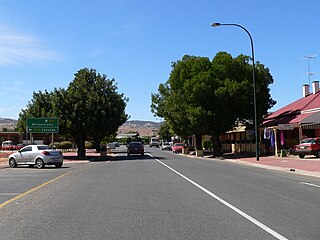
Lyndoch is a town in Barossa Valley, located on the Barossa Valley Highway between Gawler and Tanunda, 58 km northeast of Adelaide. The town has an elevation of 175m and an average rainfall of 560.5mm. It is one of the oldest towns in South Australia.
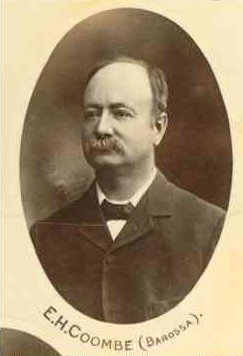
Ephraim Henry Coombe was a South Australian newspaper editor and politician. He was editor of the Bunyip at Gawler from 1890 to 1914. He was a member of the South Australian House of Assembly from 1901 to 1912 and 1915 to 1917, representing the electorate of Barossa. A long-time liberal in the House, he refused to join the united conservative Liberal Union in 1910, and was defeated in 1912 recontesting as an independent. Following his defeat, he edited the Daily Herald from 1914 to 1916. He was re-elected to the House for Barossa in 1915, having joined the Labor Party, but died in office in 1917.

The Barossa Light & Gawler Football Association, more commonly referred to as the BL&GFA, is an Australian rules football competition based in the Barossa Valley, Gawler Region and Light Region of South Australia, Australia. Just 42 kilometres north of the state capital of Adelaide, the BL&GFA is an affiliated member of the South Australian National Football League. In 2022, Nuriootpa secured the premiership cup for a record equalling eighth time. The current president of the League is Mick Brien and the major sponsor of the league is the Grant Burge Winery.
This is a list of members of the South Australian House of Assembly from 1933 to 1938, as elected at the 1933 state election:
The Barossa Valley railway line is a railway line with several branches, running from Gawler into and through the Barossa Valley. The original terminus was at Angaston. A branch was built from Nuriootpa via Stockwell to Truro, and a further branch from that to Penrice. The Angaston and Truro branches are closed and removed; the line to Penrice remains but has not been used since 2014.
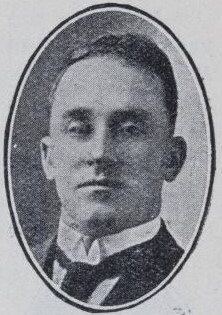
Thomas Patrick Howard was an Australian trade unionist and politician. He was a member of the South Australian House of Assembly from 1933 to 1938, representing the Lang Labor Party (1933), South Australian Lang Labor Party (1933–1934) and Labor Party (1934–1938).

Martin Peter Friedrich Basedow was a native of Hanover, Germany who arrived in South Australia aboard the Pauline in March 1848.

Walter Duffield was a pastoralist and politician in colonial South Australia, Treasurer of South Australia 1865 to 1867.
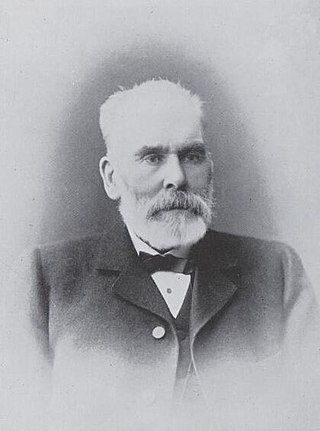
James Martin was an industrialist and politician in the early days of the Colony of South Australia.

Reginald John Rudall was a lawyer and politician in Gawler, South Australia. His father, Samuel Bruce Rudall, was member for Barossa 1906–1915.
Samuel Bruce Rudall was a lawyer and politician of the State of South Australia.
Maynard Boyd Dawkins MBE was a sheep breeder, choirmaster and politician in the State of South Australia.

Edward Lindley Grundy was a businessman, politician and editor in the young colony of South Australia.
Leslie Samuel Duncan was a newspaper editor and politician in the State of South Australia.
George Cooke was an Australian politician who represented the South Australian House of Assembly multi-member seat of Barossa from 1924 to 1933. He was elected as a member of the Labor Party, but was expelled from the party in the 1931 Labor split and sat with the splinter Parliamentary Labor Party for the remainder of his term.
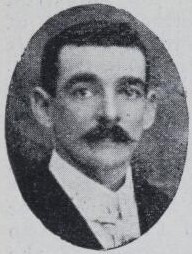
Thomas Tonkin Edwards was an Australian politician who represented the South Australian House of Assembly multi-member seat of Barossa from 1930 to 1933. He was elected as a member of the Labor Party, but was expelled from the party in the 1931 Labor split and sat with the splinter Parliamentary Labor Party for the remainder of his term.

The Gawler Football Club was an Australian rules football club that was founded in June 1868 based at Gawler in the Township of Gawler about 39 km to the north-north east of Adelaide, South Australia.

Job Harris, was a store keeper, post master, hotelier, gold miner and South Australian prominently associated with the discovery of gold at the Barossa Goldfields, the largest gold rush in the colony of South Australia.
The Leader is a weekly newspaper that was first published in Angaston, South Australia on 24 July 1918, and continues being published to the present day in the Barossa Valley. It was the first English-language newspaper covering any part of the Barossa Valley, apart from the Kapunda Herald.
A by-election was held on 22 November 1924 for one of the seats of the three-member electoral district of Barossa, South Australia. The cause for the by-election was the death of William Hague on 9 October 1924. Despite a field of seven candidates from three parties for three seats at the general election in March, only two candidates stood for the by-election in November. The result was that Henry Crosby for the Liberal Federation with 3732 votes defeated Michael Joseph Murphy for the Labor Party with 3063 votes.
References
- 1 2 3 4 "History of South Australian Elections 1857 - 2006 Volume 1: ECSA". Archived from the original on 2 March 2014. Retrieved 4 October 2016.
- ↑ "Basedow, Herbert (1881–1933)". Australian Dictionary of Biography . National Centre of Biography, Australian National University. ISSN 1833-7538 . Retrieved 4 October 2016.
- ↑ "Barossa by-election". The Border Watch . 20 June 1933. p. 1. Retrieved 4 October 2016– via Trove.
- ↑ "Barossa by-election". Bunyip . 9 June 1933. p. 9. Retrieved 4 October 2016– via Trove.
- 1 2 3 4 "Barossa by-election". Bunyip . 14 July 1933. p. 9. Retrieved 7 October 2016– via Trove.
- ↑ "Keen by-election in Barossa likely". The Advertiser . 7 June 1933. p. 15. Retrieved 4 October 2016– via Trove.
- ↑ "Party Leaders In Barossa By-Election Campaign". The Advertiser . 21 June 1933. p. 18. Retrieved 4 October 2016– via Trove.
- ↑ "Barossa by-election". The Advertiser . 12 July 1933. p. 18. Retrieved 4 October 2016– via Trove.
- ↑ "Barossa by-election". The Narracoorte Herald . 11 July 1933. p. 3. Retrieved 4 October 2016– via Trove.
- ↑ "Barossa by-election". The Australian Worker . 19 July 1933. p. 15. Retrieved 4 October 2016– via Trove.
- ↑ "Statistical Register of the Legislature, 1836-2006" (PDF). Parliament of South Australia. Archived from the original (PDF) on 12 March 2011. Retrieved 11 September 2016.